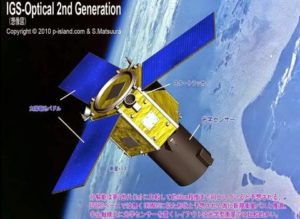
A Mitsubishi Heavy Industries (MHI) H-2A satellite launch vehicle successfully lofted Japan’s latest Intelligence Gathering Satellite (IGS) reconnaissance satellite from the Tanegashima Space Center in the Southwest of Japan on Tuesday, 27 February, 2018.
The IGS-Optical 6 satellite is one of several Japan has in orbit, including a number with synthetic aperture radar imagers, that monitor military activities by North Korea and China, to include ballistic missile and nuclear weapons tests, naval activities in the South China Sea, East China Sea, the Sea of Japan, and the Western Pacific Ocean, as well as North Korean and Chinese troop movements.
Japan also uses the IGS satellites to monitor Russian military activities given Tokyo’s longstanding territorial dispute with Moscow over the Kuril Islands, also known as the Northern Territories, to the north of Japan and off the coast of Russia’s Far East.
More recently, both China and Russia have conducted naval and aerial maneuvers in Japanese territorial waters and airspace in order to test Japanese defences and responses. Japan is also deeply concerned about North Korean ballistic missile tests and its nuclear weapons programme, given the hostility of Pyongyang towards Tokyo and their geographical proximity.
As a result, IGS satellites provide Tokyo with strategic early warning of North Korean, Chinese, and Russian activities, as well as a useful defence diplomacy tool for sharing its intelligence with allies such as the United States in return for American intelligence Japan might find otherwise more difficult to obtain.
The Japanese government intends to put ten IGS satellites in orbit at any one time, consisting of a mix of electro-optical and synthetic aperture radar sensors to assure day and night, all-weather, coverage of targets of interest with regular revisit rates. IGS imagery is supplemented by Japanese civil Earth observation satellites such as the ASNARO system, as well as commercial and allied imagery.
For over a decade, the Japanese satellite industry, backed by the Japanese government, has sought to sell high-resolution Earth observation satellites, such as the ASNARO, to countries in Central and Southeast Asia. Later in 2018 Japan shall launch JV-LOTUSat-1, based on the ASNARO 2 design, for Vietnam, followed by JV-LOTUSat-2 in 2020.


